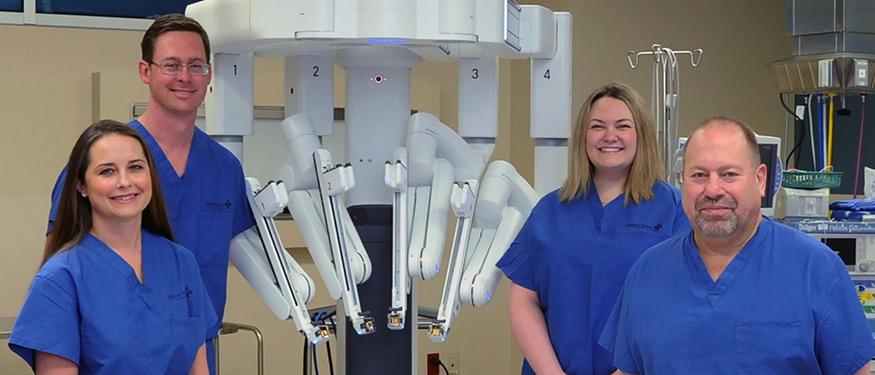Robotic Surgery
What is Robotic Surgery?
Robotic surgery is an advanced form of minimally invasive, or small-incision surgery, where surgeons use a robotic technology to assist them in certain surgical procedures. Surgical robots are programmed to aid in the positioning and manipulation of surgical instruments. This provides our surgeons with better accuracy, flexibility and control. The robot’s “hands” have a high degree of flexibility, allowing surgeons the ability to operate in very tight spaces in the body that would otherwise only be accessible through open, long-incision surgery. Robotic technology makes surgeries that were technically difficult or unfeasible previously, now possible.
The advantages of robotic surgery
Since 2014, GRMC has performed more than 3,100 robotic surgeries, allowing physicians an amazing degree of accuracy and control, while providing patients a less invasive surgical option. In 2018, GRMC became the only healthcare facility in the region to offer robotic surgery with the most advanced surgical system to date; the da Vinci Xi Surgical System. As with all robotic procedures, the surgeon is 100% in control of the robotic-assisted da Vinci system, which translates the physicians hand movements into smaller, more precise movements of tiny surgical instruments inside the patient’s body. The Xi system’s 3D-HD vision provides surgeons a highly magnified view, virtually extending their eyes and hands into the patient. The more compact and sleek design provides enhanced vision definition and clarity, while the newly designed smaller, thinner, and more flexible surgical instruments offer a greater range of motion than with previous surgical systems.
Surgery is a necessary part of healthcare, and just like there are breakthroughs in medicine, there are breakthroughs in surgical procedures. Robotic surgery is a new and exciting technology that offers many benefits compared to traditional, open surgery.
Patients can expect:
- Shorter hospitalization
- Reduced pain and discomfort
- Faster recovery time and return to normal activities
- Smaller incisions, resulting in reduced risk of infection
- Reduced blood loss and transfusions
- Minimal scarring
Surgeons also experience major advantages, including:
- Greater visualization
- Enhanced dexterity
- Greater precision

